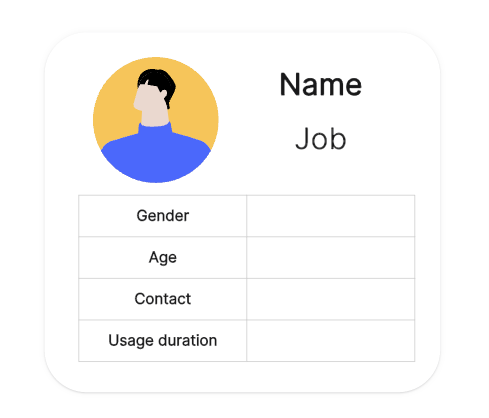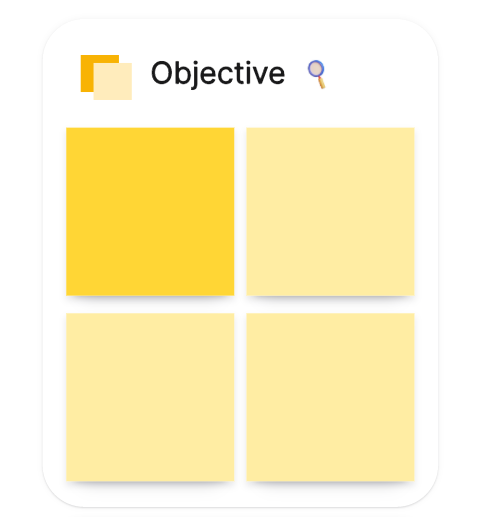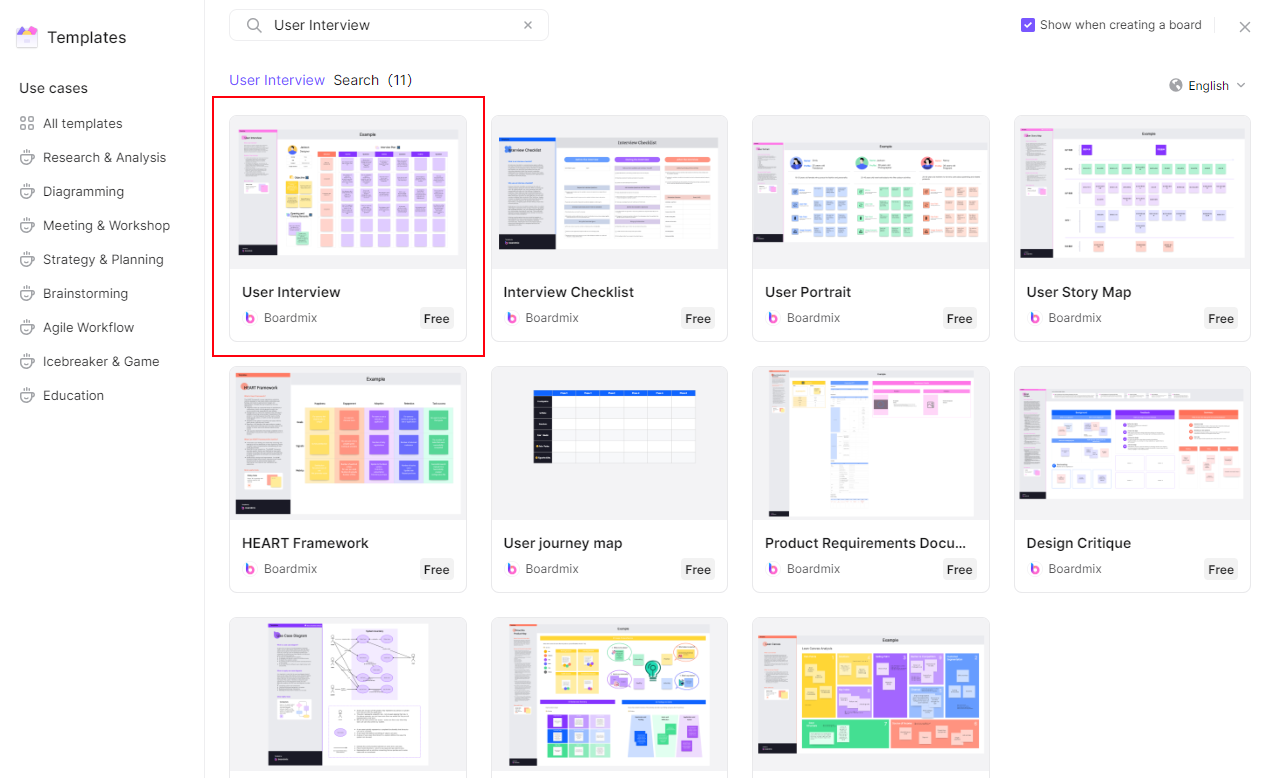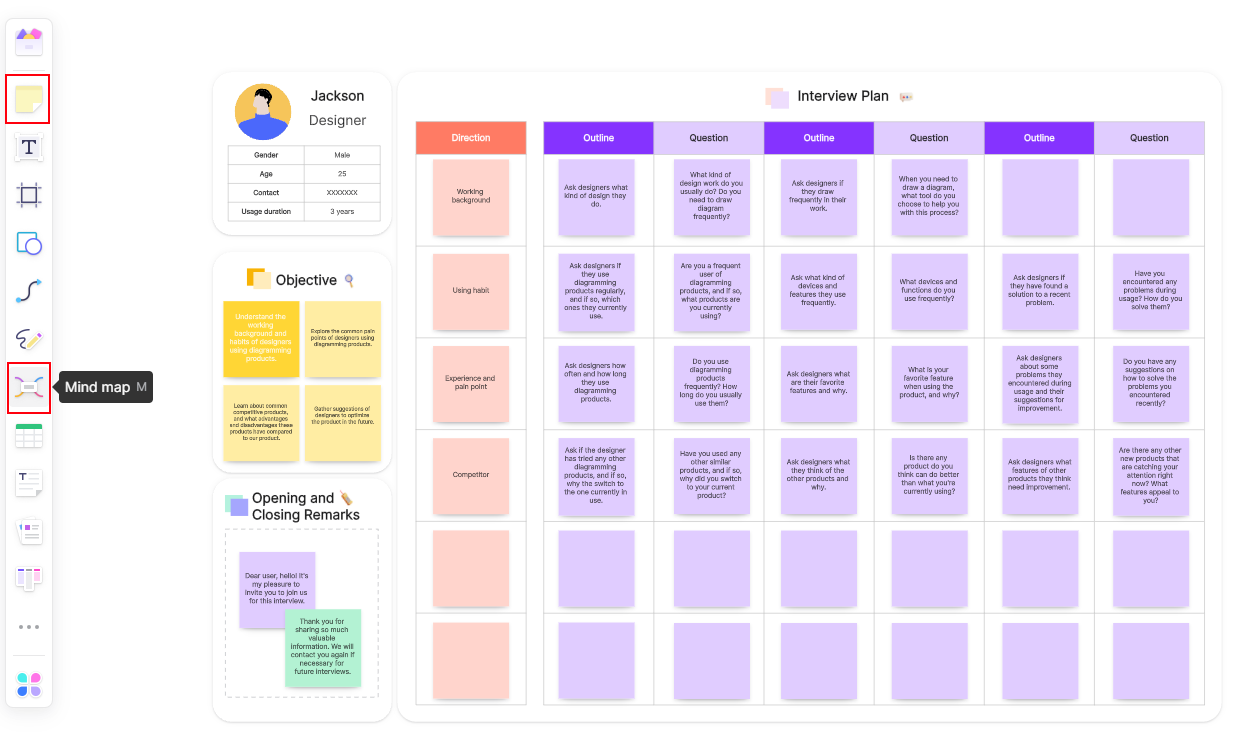User interviews are a cornerstone of user-centered design and development processes, providing valuable insights into the needs, preferences, and behaviors of the end-users. This qualitative research method goes beyond the surface, allowing designers, product managers, and developers to understand the user experience in a profound and meaningful way. In this article, we will delve into the significance of user interviews, explore best practices, and highlight their role in shaping successful products and services.

Part 1. The Purpose of User Interviews
User interviews serve a dual purpose: to gather information about users' experiences and to empathize with their perspectives. By engaging in one-on-one conversations, researchers can uncover nuances that quantitative data might overlook. The goals of user interviews typically include
Understanding User Needs: Interviews help identify the pain points, desires, and expectations of users. This understanding forms the foundation for creating user-centric solutions.
Validating Assumptions: Design and development teams often make assumptions about user behavior. Interviews offer a chance to validate or challenge these assumptions, ensuring that the final product aligns with user expectations.
Iterative Improvement: Through multiple rounds of interviews, teams can iteratively refine their designs. This iterative process is crucial for creating products that continuously meet user needs and expectations.
Part 2. What Should Concern in a User View?
When conducting a user interview, it's essential to address various aspects to gain a comprehensive understanding of the user's perspective. Here are key considerations and areas of concern in a user interview:
1. User Background:
Demographics: Understand the user's age, gender, occupation, education, etc.
Experience Level: Determine their familiarity and experience with similar products or services.

2. Goals and Objectives:
Current Goals: Explore the user's immediate goals and objectives.
Long-term Goals: Understand their broader, future-oriented aspirations.

3. Usage Patterns:
Frequency: How often do they use the product or service?
Context of Use: Where, when, and in what context do they typically use it?
4. Challenges and Pain Points:
Current Challenges: Identify any obstacles or difficulties they face.
Past Pain Points: Learn from their past experiences and frustrations.
5. Expectations and Preferences:
Feature Expectations: What features or functionalities do they expect?
Preferred Interaction Styles: Understand how they prefer to interact with the product or service.
6. Feedback on Current Solutions:
Likes and Dislikes: What aspects of existing solutions do they appreciate or dislike?
Improvement Suggestions: Ask for ideas on how current offerings could be enhanced.
7. Competitor Comparisons:
Competitor Usage: Ask about their experiences with similar products or services.
Comparison Criteria: Understand how they compare different offerings.
8. Future Expectations:
Desired Enhancements: Explore what improvements or new features they'd like to see in the future.
Emerging Trends: Identify any emerging trends or technologies they find interesting.
Part 3. How to Do User Interviews?
Conducting effective user interviews involves a systematic approach. Here's a step-by-step guide to help you navigate the process:
Step 1. Set Clear Objectives: Clearly define what you want to learn from the user interviews. Identify specific goals and questions to guide your conversation.
Step 2. Recruit Diverse Participant: Select a diverse group that represents your target audience. Consider demographics, behaviors, and varying levels of expertise.
Step 3. Prepare a Script: Develop a concise script with open-ended questions. Start with introductory queries, gradually moving to more in-depth topics.
Step 4. Create a Comfortable Environment: Choose a quiet and comfortable space for the interview. Ensure participants feel at ease and understand the purpose of the discussion.
Step 5. Active Listening and Probing: Actively listen to participants' responses, and use follow-up questions to delve deeper. Encourage them to share their experiences and insights openly.
Step 6. Record and Analyze Data: With consent, record the interviews to capture nuances. Afterward, transcribe recordings and analyze the data to identify patterns and key insights.
Step 7. Iterate and Apply Learnings: Use the insights gained to iterate on your designs or strategies. Apply learnings to enhance the user experience, and consider conducting additional interviews for continuous improvement.
By following these seven steps, you can efficiently conduct user interviews, gathering valuable insights that inform and shape user-centered design and development processes.
Part 4. Bonus: Streamline Your User Interviews Process with Boardmix
Boardmix is an innovative online whiteboard solution designed to streamline your user interview process. With a wide range of intuitive drawing templates, Boardmix allows you to visualize ideas, map out strategies, and collaborate in real-time with your team. Unlike traditional methods, Boardmix makes it easy to capture insights, feedback, and observations during user interviews. You can easily organize your thoughts, create visual summaries of the discussions, and share them instantly with stakeholders. This not only saves time but also ensures that no critical information is lost in translation. Whether you're a product manager conducting user research or a UX designer brainstorming design ideas, Boardmix is the perfect tool to make your user interviews more effective and efficient.

Key features of Boardmix:
- Real-Time Collaboration: Boardmix allows multiple users to work on the same whiteboard simultaneously, enabling real-time collaboration and brainstorming.
- Intuitive Drawing Templates: With a wide range of pre-designed templates, Boardmix makes it easy for users to visualize their ideas and strategies.
- User Interview Facilitation: Boardmix streamlines user interviews by providing a platform where insights, feedback, and observations can be captured and organized effectively.
- Instant Sharing: Users can instantly share their whiteboards with stakeholders, ensuring that everyone is on the same page.
- Easy Organization: Boardmix offers features like sticky notes and sections to help users organize their thoughts and ideas in a structured manner.
Steps to use Boardmix for User Interview:
1. Start by creating a new whiteboard: You can choose from various templates or start with a blank canvas.

2. Invite your team and the interviewee: Boardmix supports real-time collaboration, allowing everyone to participate simultaneously.
3. Use drawing tools during the interview: Capture insights, feedback, and observations visually during the conversation. This could include mind maps, flowcharts, or simply notes.

4. Organize your thoughts: Use sticky notes and sections to categorize information effectively.
5. Share the whiteboard: Once the interview is complete, you can instantly share the whiteboard with stakeholders.

Part 5. Best Practices for User Interviews
Define Clear Objectives: Before conducting interviews, establish clear objectives. What specific information are you seeking? This clarity ensures that interviews stay focused and yield relevant insights.
Recruit Diverse Participants: Aim for diversity in your participant pool. Include individuals who represent different demographics, usage patterns, and levels of expertise. This diversity enriches your understanding of the user base.
Open-Ended Questions: Frame questions in a way that encourages participants to share their thoughts openly. Avoid leading questions that may bias responses. Open-ended questions promote authentic and detailed feedback.
Active Listening: The interviewer's role is not just to ask questions but to actively listen. Pay attention to verbal and non-verbal cues, allowing for deeper insights and follow-up questions.
Create a Comfortable Environment: A relaxed and comfortable setting encourages participants to express themselves more freely. Consider factors like location, seating arrangement, and even lighting to create an inviting atmosphere.
Combine Methods: User interviews can be complemented by other research methods, such as usability testing, to gather a comprehensive understanding of the user experience.
Conclusion
User interviews are a powerful tool for gaining a deep understanding of users and their needs. By incorporating insights from these interviews, design and development teams can create products and services that resonate with their target audience. The art of user interviews lies in the ability to extract meaningful information through thoughtful questioning, active listening, and a commitment to continuous improvement. As technology evolves, the importance of user interviews remains steadfast, guiding the creation of user-centric solutions in an ever-changing landscape.
Boardmix is the ultimate tool for conducting user interviews, offering real-time collaboration, intuitive drawing templates, and easy organization of thoughts. It allows you to capture insights visually during the conversation and share them instantly with stakeholders, ensuring no critical information is lost. By streamlining your user interview process, Boardmix not only saves time but also enhances the effectiveness of your research efforts. Get it right now!













